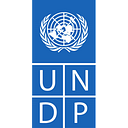A human-led solution to nature’s challenges
UNDP to support the Municipality of Lezhe in managing the high risk of natural disasters
Lezhe is a municipality in North-West Albania, home to 106,245 citizens who inhabit two main urban areas and 65 villages.
Like much of the country itself, its territory offers diverse landscapes and protected natural reserves which are nothing less than a sight to behold. Its western part consists of a long coastline of sandy beaches, while in the east it gradually adopts mountainous, hilly features. In other parts, however, the terrain is below sea level, with branches of the Drin River and Gjadri River crossing its north-west and the Mati River and its delta bordering the municipality’s east.
The same geomorphological variation that gives the municipality its beauty is, unfortunately, also what makes managing various natural hazards a challenge. For Lezhe, this challenge is particularly important to address, considering it serves as a poster-child for Albania constantly ranking first among European countries in the Risk Index for Disaster (for the period of 2011–2019), with risks such as hydrological, meteorological, climatological, and geophysical in nature.
The November 26 earthquake that also hit Lezhe, brought back the attention to the permanent seismic risk its territory faces.
“I have been living in this house for 72 years — that’s how old I am. This house dates back to 500 years, since the first member of our family lived here. The first earthquake that damaged this house was in 1979 — the front side of the house was reconstructed then. The September 21 earthquake damaged it again and cracked its walls. Then the November 26 earthquake came and my house was evaluated as non-habitable,” says Gjergj Palaj, a Spiten Village resident, showing deep cracks both inside and outside the walls of the house where he has spent his entire life.
Just as consequential are the frequently occurring floods caused by the rivers Drin and Mat, as well as by sea floods. In addition to risking the lives of thousands, the floods are also a threat to agriculture —which is a means for sustaining life for many of the villagers.
Other natural hazards that compromise Lezha’s development and the safety of its citizens range from landslides and falling rocks, to fires or snow blockages. The acceleration of the impacts of climate change, manifested by an increase in sea level and change of precipitation regime, raise the probability of future floods.
The village always had a problem with floods. Every year the swamp gets flooded — the wheat has been sowed two, three times and it hasn’t been reaped,” says Kol Gjeta, Head of Tresh Village, pointing at fields stretching out behind him.
With each passing year, more villagers are hesitant to sow, worried the entire value of their products’ worth will go to waste due to something that is out of their control. The need to revert this trend and find sustainable development solutions has become more urgent than ever.
UNDP’s timely response to future risks
In the face of the November 26 earthquake, which significantly affected the country socially, economically and environmentally and realizing the lack of preparedness to cope with natural disasters in several fronts, UNDP Albania, Lezha’s Municipality and Co-Plan, a local think-tank specializing in urban development, started a pilot project with the aim of developing three instruments for adequately facing natural hazards: a first-of-its-kind assessment of natural disaster risks, a document setting out strategic priorities for mainstreaming disaster risk reduction into Lezha Municipality’s development plans and, ultimately, the preparation of a local civil emergency plan.
From day one, the project was conceived as a way to help the municipality strengthen its endurance and ensure risk-informed development, seeing that municipalities are the first door citizens will knock on with their concerns about risks and vulnerability. Lezha’s higher exposure to natural hazards was not coincidental in choosing it to launch the pilot — it provides the possibility to test the methodology for different risks and later offer a practical model to be implemented in other municipalities.
In this context, UNDP will test and ensure that the approach, methodology and application are fine-tuned and ready for replication in the remaining municipalities of Albania.
A joint team of experts is working to carry out the risk assessment, using a variety of instruments that combine participatory and scientific approaches. These range from direct observations and semi-structured interviews with relevant stakeholders, such as citizens, experts and businesses, to participatory risk-mapping and thematic focus groups, depending on the type of hazard. The experts are additionally using desk reviews of available studies, drones to monitor critical areas of risk and consultation of specialized expertise for in-depth assessment and development of risk scenarios.
For UNDP, it is vital to prioritize the needs of people. Hence, to ensure an all-inclusive approach and make sure the voices of all concerned stakeholders are heard in the development of the Local Disaster Risk Reduction Plan, UNDP held consultations with local government structures, businesses, civil society organizations, and citizens. The newly established Commission for Civil Protection at the municipal level includes representatives from civil society, the religious community and local businesses.
The Law “On Civil Protection” provides the basis for the project and the three “instruments” that will be produced, while the methodology used is in line with the Sendai Framework for Disaster Risk Reduction. When completed, the project will be essential in helping Lezha be better prepared for potential future disasters at the municipal level. Sustainable development should not be continually disrupted by setbacks which can be anticipated and, in turn, mitigated and well-managed. This project seeks to guide the way towards this path.
Lezha’s citizens, who have always been on the front line of this battle with nature, will be its primary beneficiaries.
